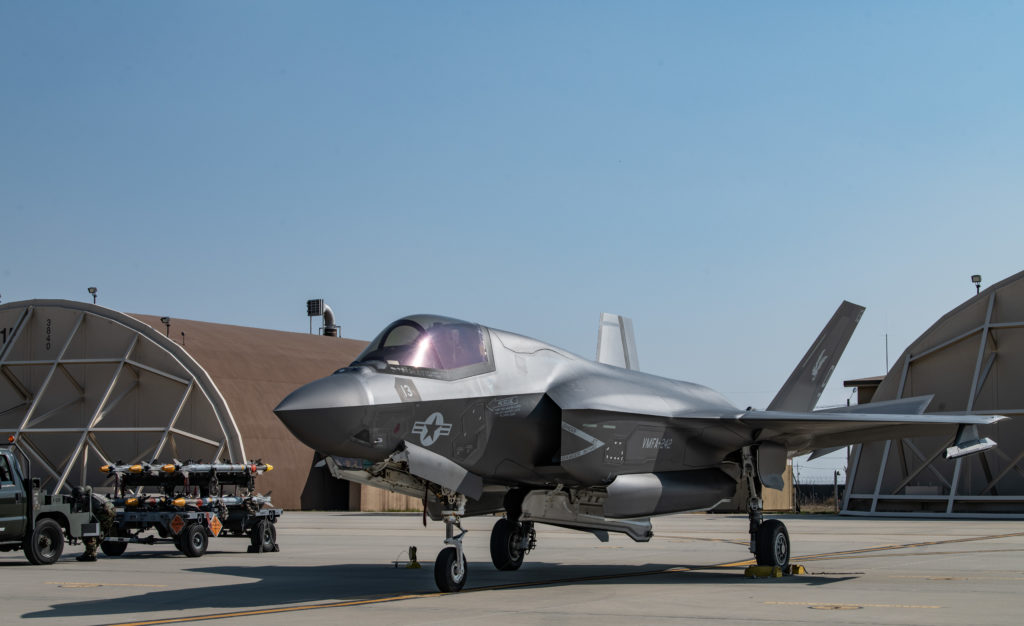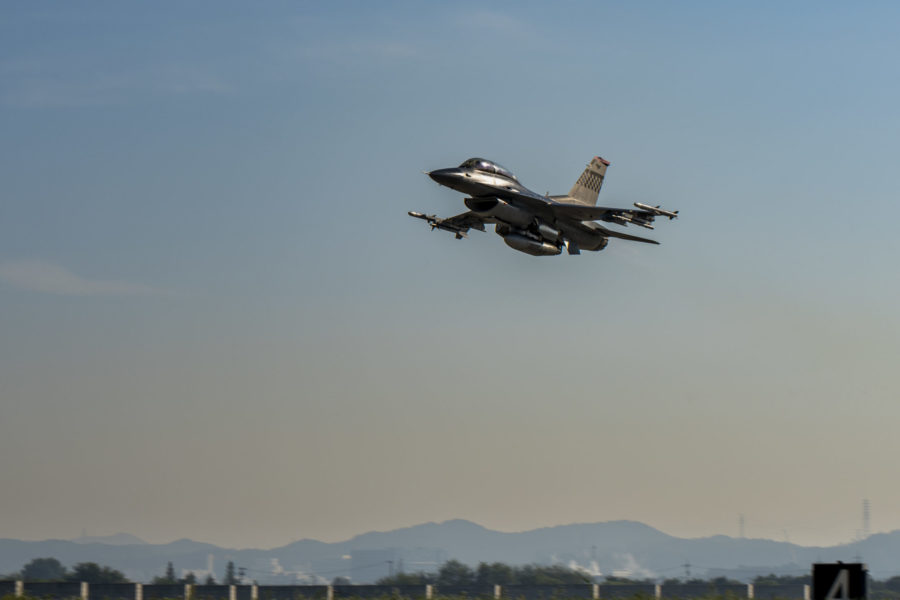Exercise Vigilant Storm, a large joint aerial training event between the U.S. and South Korea, kicked off Oct. 31 with U.S. Air Force fourth-generation fighters flying alongside F-35s from the U.S. Marine Corps and Republic of Korea Air Force.
All told, approximately 240 aircraft and thousands of personnel will participate in the five-day-long exercise, Pentagon Press Secretary Brig. Gen. Patrick S. Ryder told reporters Nov. 1.
“This year’s event, which was long scheduled, will strengthen the operational and tactical capabilities [and] combined air operations and support our strong combined defense posture,” Ryder added.
A Pacific Air Forces spokesperson told Air & Space Forces Magazine that the exercise will include “approximately 100 U.S. aircraft … from bases within and outside of South Korea.” A release from the 7th Air Force (Air Forces Korea) stated that USAF will fly “fourth-generation jets” as part of the exercise.
Both Osan and Kunsan Air Bases in South Korea have F-16 squadrons, with Osan also hosting a squadron of A-10s and units with the U-2 Dragon Lady ISR plane and HH-60G Pave Hawk helicopters.
The exercise comes in a period of increased tensions with North Korea, which has conducted a series of missile tests in the past month, one of which was followed by South Korea and the U.S. flying F-15K Slam Eagles and F-16 Fighting Falcons in a show of force.
This Vigilant Storm exercise, in particular, has drawn a fierce response from North Korean officials, who claimed Nov. 1 that it is preparation for an invasion and issued veiled nuclear threats of a “terrible price,” according to Yonhap news agency.
Asked to respond to those comments, Ryder reiterated that Vigilant Storm has been “long planned” and will focus on “enhancing interoperability of our forces to work together to defend the Republic of Korea and our allies in the region.”
In its release, Air Forces Korea specified that the exercise will challenge the ROK and U.S. air forces to practices missions such as “close air support, defensive counter air, and emergency air operations 24 hours a day.”
At the same time, “support forces on the ground will also train their base defense procedures and survivability in case of attack,” the release states.
Vigilant Storm is simply the new name for what has previously been dubbed the Combined Flying Training Event, a large annual exercise focused on interoperability that itself was a replacement for the yearly Vigilant Ace exercises, which were suspended as part of diplomatic discussions.
In addition to the U.S. Air Force aircraft that will take part in Vigilant Storm, the exercise will also include F-35As from South Korea’s air force and F-35Bs from the Marines, which arrived at Kunsan Air Base on Oct. 31 from Iwakuni, Japan, according to images shared by the 8th Fighter Wing.
The Royal Australian Air Force, meanwhile, has deployed a KC-30A aerial refueler to take part in the exercise.
Editor’s Note: This story was updated Nov. 2 to correct the name of the exercise, Vigilant Storm.

